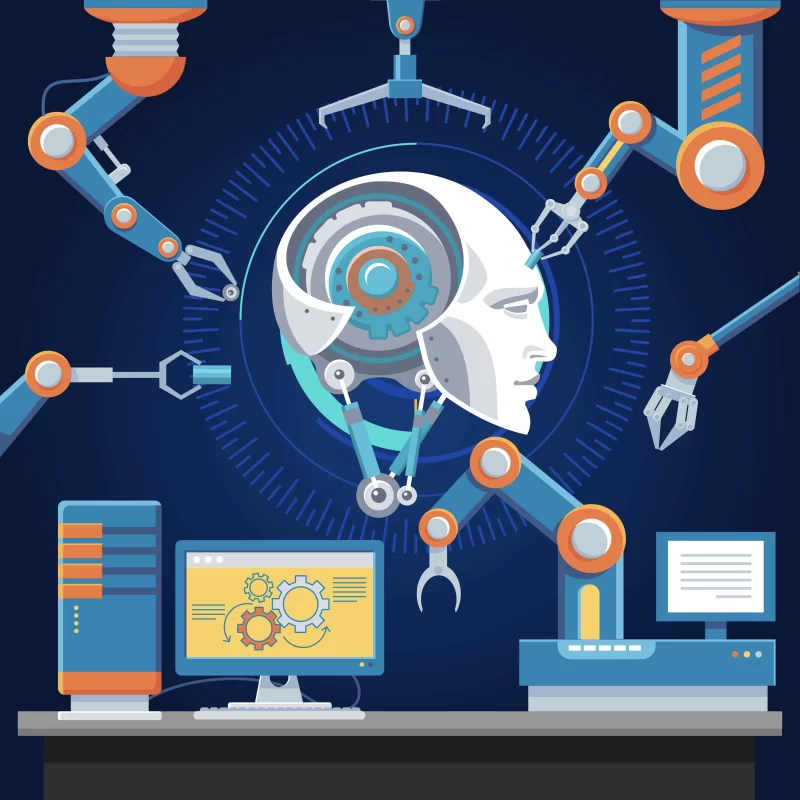Table of Contents
Introduction
The field of machine learning has exploded in recent years, with types of machine learning models powering everything from product recommendations to self-driving cars. However, machine learning is not a single approach – there are many different types of machine learning models, each with its own strengths and weaknesses. In this article, we’ll provide a comprehensive overview of the major categories of machine learning models and the diverse landscape of approaches available.
The Diverse Landscape of Types of Machine Learning Models
First, it’s important to understand why there are so many different types of machine learning models. The key reason is that there are many different types of problems and data that machine learning can be applied to. For example, predicting home prices based on location and size (a regression task) requires very different techniques than classifying images as cats or dogs (a classification task).
Different types of machine learning models have evolved to handle the nuances of these different problem types. In addition, models have grown increasingly complex and specialized over time in order to handle very difficult real-world tasks. However, while the machine learning landscape can seem overwhelming at first, most models fall into a few broad categories based on how they “learn” from data.
Supervised Learning Models

One of the most common categories is supervised learning. In supervised learning, the machine learning model is given labeled example inputs and desired outputs, and the goal is to learn a general mapping between inputs and outputs. Some of the most popular types of supervised learning models include:
Linear Regression
Linear regression is perhaps the simplest supervised learning model for regression problems. Regression refers to predicting a continuous numeric value, such as predicting home prices or sales revenue. Linear regression attempts to model the relationship between input variables and the output using a straight line (or plane in multiple dimensions). While simple, linear regression establishes the foundation for more complex regression models.
Classification Type of Machine Learning Models
On classification tasks, the model attempts to predict which categorical label an input belongs to, such as whether an image contains a dog or a cat. Some examples of powerful supervised classification algorithms include:
- Logistic regression: Extends linear regression to classification by predicting the probability an input belongs to each class. Simple but effective baseline model.
- Decision trees: Models that recursively divide the input space into regions with mostly the same label. Easy to visualize and interpret.
- Support vector machines (SVMs): Models that try to find a hyperplane to separate classes. Effective on high-dimensional sparse data.
- Neural networks: Models composed of layered nodes inspired by neurons in the brain. Excel at problems like image recognition.
Unsupervised Type of Machine Learning Models
Unsupervised learning models take a different approach – instead of being given example input-output pairs, unsupervised models are provided only with unlabeled input data. Their goal is to uncover patterns, relationships, and structure within the data. These techniques include:
Clustering Algorithms
Clustering algorithms like k-means and hierarchical clustering group data points together that are more similar to each other than points in other clusters. This allows unsupervised learning models to discover categories and segment data without explicit labels.
Dimensionality Reduction
Real-world data like images and audio can have extremely high dimensionality. Dimensionality reduction techniques like principal component analysis (PCA) can reduce the complexity of
data by projecting it onto a lower-dimensional space. This reveals important trends and patterns in the data.
Semi-Supervised and Reinforcement Learning Models

In addition to supervised and unsupervised learning, there are other categories of types of machine learning models that incorporate elements of both:
Semi-Supervised Learning
Semi-supervised learning combines labeled and unlabeled data during training. A small amount of labeled data provides a baseline while the model improves using abundant unlabeled data. This can enhance performance when collecting labeled data is expensive.
Reinforcement Learning
In reinforcement learning, an “agent” model learns to make decisions sequentially through trial-and-error interactions with an environment. The agent receives “rewards” for making good decisions and “penalties” for mistakes. This approach is ideal for controlling problems like playing games.
Advanced and Specialized Models

Advanced and Specialized ModelsSo far we have covered more traditional types of machine learning models. However, modern breakthroughs have enabled more advanced and specialized types of models:
Deep Learning
Deep learning refers to neural networks with many layers that can learn very complex relationships within data. Applications include image recognition, natural language processing, and playing complex games like Go. However, deep learning models require massive training data and computing power.
Ensemble Learning
Ensemble methods combine multiple models together to improve overall predictive accuracy. Two popular examples are random forests (ensembles of decision trees) and gradient-boosting machines (ensembles of shallow decision trees). Ensembles reduce overfitting and variance compared to using a single model.
Conclusion
This overview provides a glimpse into the diverse world of types of machine learning models, from simple linear regression to deep neural networks. The key is matching the right model to the problem and data at hand. Understanding the strengths and weaknesses of different learning algorithms allows practitioners to make the most appropriate choice for their needs. With the right models and data, the possibilities to solve impactful problems using machine learning are endless.

